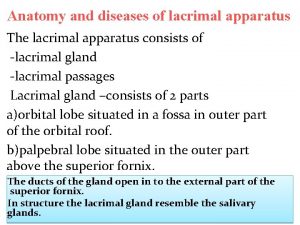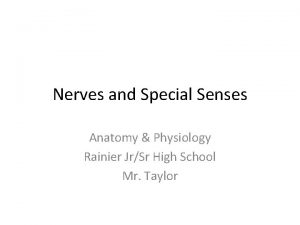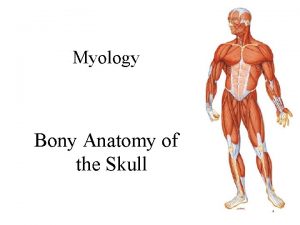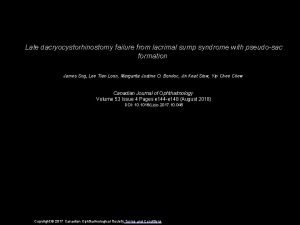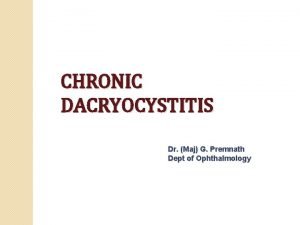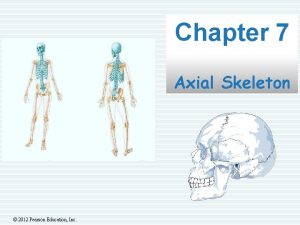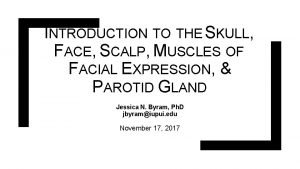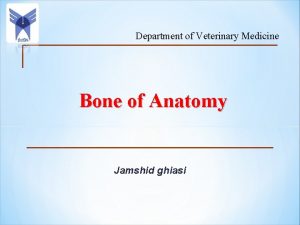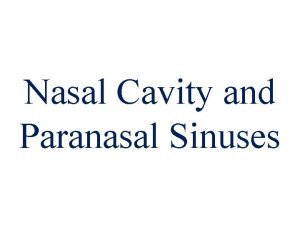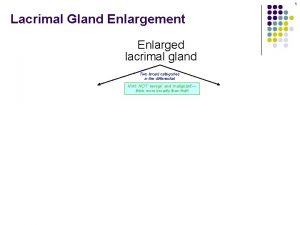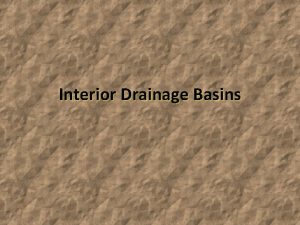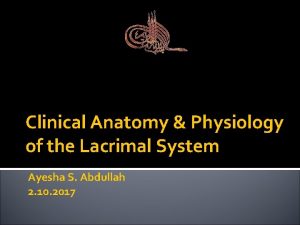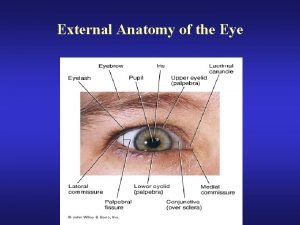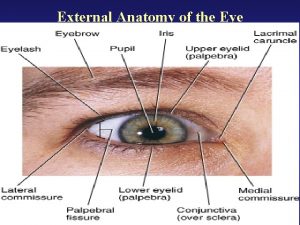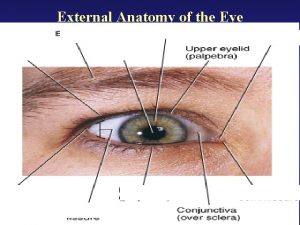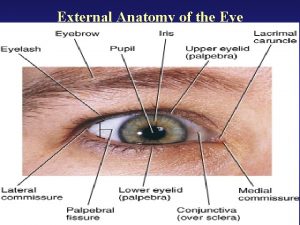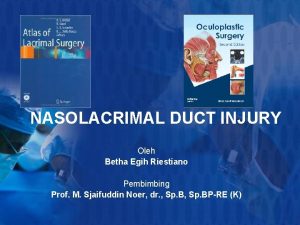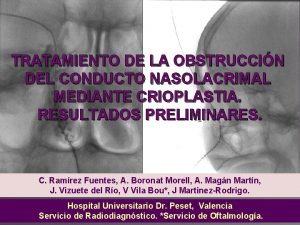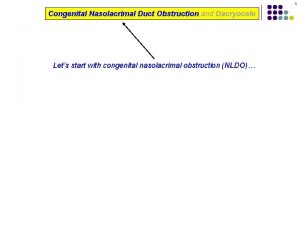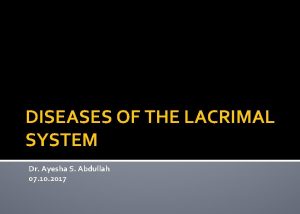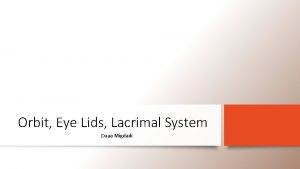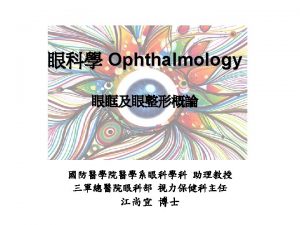LACRIMAL DRAINAGE SYSTEM ANATOMY The nasolacrimal drainage system























- Slides: 23

LACRIMAL DRAINAGE SYSTEM

ANATOMY • The nasolacrimal drainage system serves as a conduit for tear flow from the external eye to the nasal cavity. • Tears drain into the upper and lower puncta upper and lower canaliculi common canaliculus lacrimal sac lower canaliculus nose • Tear drainage is active process • Each blink will pumps tears through the system


ABNORMALITIES OF LACRIMAL SYSTEM Abnormalities are found is • Tear composition • Drainage of tear

1. ABNORMALITIES IN COMPOSITION AQUEOUS INSUFFICIENCY (DRY EYES) 1. 2. Deficiency of lacrimal secretion resulting in Keratoconjunctivitis sicca (KCS). If associated with dry mouth or mucous membrane = Sjogren’s Syndrome Symptoms • Grittiness, burning, and photophobia • Lids heaviness and ocular fatigue. May worse in evening • Visual acuity may be reduced Signs • Small dots of fluorescence over exposed corneal & conjunctival surface. • Tags of abnormal mucus may attach to cornea causing pain. (filamentary keratitis) Treatment • Supplementation of tears (artificial tear) • Humid environment around the eyes using shielded spectacles • Occlude the puncta with plug or surgery to conserve the tears



INADEQUATE MUCUS PRODUCTION STEVENS-JOHNSON’S SYNDROME • Acute episodes inflammation causing macular target lesion on skin and discharging lesion on the eye, mouth and vulva. • Causes conjunctival shrinkage with adhesion forming between the globe, aqueous and mucin deficiency. Similar symptoms to those seen in aqueous deficiency. XEROPHTHALMIA • • • Vit A Deficiency, causing childhood blindness on a worldwide scale. Goblets cells are lost from the conjunctiva and ocular surface become keratinized. Aqueous deficiency causing dry eyes can lead to corneal ulceration and lastly blindness Bitot’s spot : clumps of keratin debris build up inside conjunctiva preceedes ulceration Prevented by early treatment with vitamin A OTHER CAUSES • Chemical burns of the eyes by alkalis. • Trachoma causes by Chlamydial infection roughening the inner surface of the eyelid.





MALPOSITION OF EYELID MARGIN • Ectropion or insufficient closure of eyes (7 th nerve palsy or proptosis in dysthyroid eyes) preocular tear film cannot form adequeately dry eyes Treatment • Correction of lid deformity by LATERAL TARSHORRHAPHY • If temporary, use artificial tears and lubricant • Or induced temporary ptosis by local injection of botulinum toxin


2. DISORDERS OF TEAR DRAINAGE • Tear production exceed the capacity of drainage system. It may caused by : 1. 2. • Irritation of ocular surface, e. g. by foreign body Occlusion of any part of drainage system. OBSTRUCTION OF TEAR DRAINAGE – Nasolacrimal duct is common site for tear drainage system to get blocked. – Usually block by infection or direct trauma. – In peadiatric age, congenital obstruction of the duct is common at the distal end watering eye • The sac may become infected accumulate as mucocele or causing dacrocystitis. • Conjunctiva is not inflamed. • Most obstruction resolved spontaneously in first year of life. • If epiphora persist, patency is achieved by passing probe via the punctum to open the obstruction.

SYMPTOMS • Watering eyes associated with stickiness • Eye is white. • Symptoms may get worse during windy or cold weather SIGNS • Stenosed punctum may apparent on slit lamp examination • Obstruction may diagnosed by syringing the nasolacrimal system with saline the system is patent if the patient taste the saline as it reached the pharynx. • Injecting radio-opaque dye to confirmed the exact location into the nasolacrimal system. Then, X-rays is used to follow the passage of the dye until we find the blockage. TREATMENT • Treat the underlying cause such Blepharitis etc. • SURGERY : Dacryocystorrhinostomy (DCR), connecting the mucosal surface of lacrimal sac to the nasal mucosa by removing the intervening bone.





3. INFECTION OF THE NASOLACRIMAL SYSTEM • DARCOCYSTITIS • Infection of the sac cause by obstruction of the drainage system. • Organism involved usually Staphylococcus. Symptoms • Painful swelling on medial side. • Enlarged and infected sac. • Could resulting in formation of mucocele Treatment • Systemic antibiotic • DCR may be necessary to prevent recurrence.


 Lacrimal fluid
Lacrimal fluid Disease of lacrimal apparatus
Disease of lacrimal apparatus Spinal cord
Spinal cord Human skull bones names
Human skull bones names Sump syndrome
Sump syndrome Stages of chronic dacryocystitis
Stages of chronic dacryocystitis Pearson education skull diagram
Pearson education skull diagram Lacrimal bones
Lacrimal bones Horizontal
Horizontal Pain on top of skull
Pain on top of skull Sterneum
Sterneum Cavernous sinus
Cavernous sinus Hát kết hợp bộ gõ cơ thể
Hát kết hợp bộ gõ cơ thể Slidetodoc
Slidetodoc Bổ thể
Bổ thể Tỉ lệ cơ thể trẻ em
Tỉ lệ cơ thể trẻ em Chó sói
Chó sói Tư thế worms-breton
Tư thế worms-breton Hát lên người ơi
Hát lên người ơi Các môn thể thao bắt đầu bằng tiếng nhảy
Các môn thể thao bắt đầu bằng tiếng nhảy Thế nào là hệ số cao nhất
Thế nào là hệ số cao nhất Các châu lục và đại dương trên thế giới
Các châu lục và đại dương trên thế giới Công thức tính thế năng
Công thức tính thế năng Trời xanh đây là của chúng ta thể thơ
Trời xanh đây là của chúng ta thể thơ

